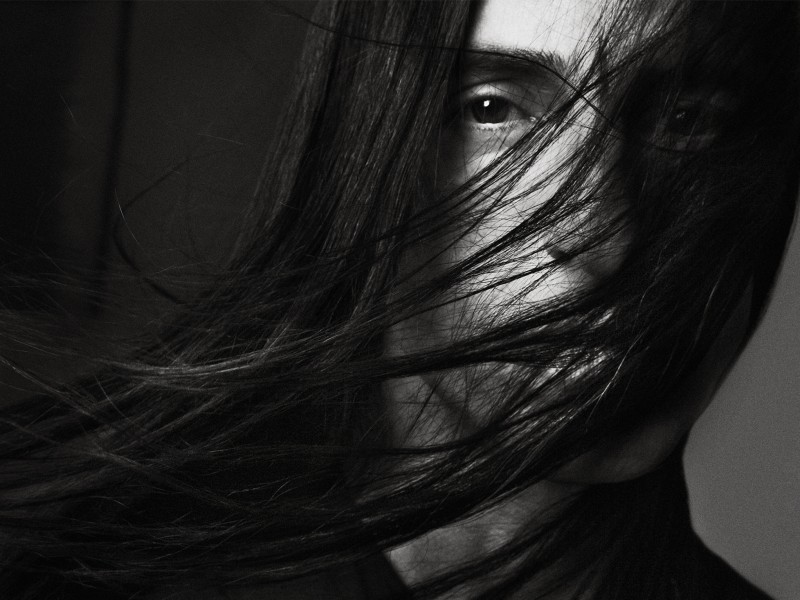Is it possible to make works of art that thwart interpretation? The career of Alberto Burri (1915-1995) suggests otherwise. From 1951, when he participated in a landmark exhibition of abstract art in Rome, Burri resisted all forms of literary or contextual analysis. Not only did he refuse to provide titles for his works, he declined to call them ‘untitled’ (Senza titolo). All he allowed was a description based on medium: ‘oil on canvas’. Many of the titles by which we know Burri’s works today have been conferred by art dealers, eager to make them more accessible to potential clients.
Over more than three decades, Burri would work in series, employing the simplest of titles based on material or colour. They range from the Catrami (“tar”) pictures of the early 1950s, to the Cellotex paintings made during the last two decades of his life. Celotex was the commercial name of a type of manufactured fibre board, but Burri added an ‘l’ to avoid copyright issues. Other materials used were sacking, wood, sheet metal and plastic. One constant material was polyvinyl acetate, or PVA—a synthetic resin used as an adhesive, that once dry took on a thick, concrete-like skin.
Known for ‘painting without paint’, Burri would tear, stitch, burn and batter his creations into submission. In the words of the Italian critic, Emilio Vila, Burri’s works were “nourished by matter that conserves only a tragic reminiscence of painting, almost as if it were asphyxiated; a material that is devitalised, impoverished, rotted, consumed and already wasted away”1. These paintings were so abject in appearance that a 1961 exhibition in Rome attracted an inquiry by the Department of Public Health. Yet, his works could also be the height of chic. In 1955 one of Burri’s New York dealers collaborated with a Harper’s Bazaar fashion shoot that featured a model dressed in tweed and jersey, posing in front of a series of ragged, brutalised paintings.
It was inevitable that Burri’s ‘creation story’ as an artist would figure prominently in the promotion of his work in America. A former doctor in the Italian army, he begun painting while interned in a POW camp in Hereford, Texas, towards the end of World War II. His grisly experiences during the war, and the mistreatment of Italian prisoners starved by their captors in Texas, were touted as important influences on Burri’s later work.
Perhaps the most remarkable aspect of the story came with Burri’s repatriation to Italy, whereupon he instantly announced his intention to stop practising medicine and become an artist—much to the despair of his family. Neither did he begin timidly and work his way up. Almost from the beginning, Burri was a radical avant-gardist with a tough singular vision. The bituminous abstractions of the Catrami series preoccupied him from 1948-52. At the same time he was developing a range of other works: Gobbi (hunchbacks, 1950-55); Muffe (moulds, 1951-53); Bianchi (white, 1949-56); and Sacchi (sacks, 1950-56). Other series would follow, but it is these works that established Burri as an emerging force in Italian art.
The distressed surfaces of Burri’s paintings, and his use of ‘poor’, unconventional materials gave rise to some obvious lines of interpretation. In response, the artist would staunchly deny that his work had anything to do with combat fatigue, post-traumatic stress disorder (as we understand now), or any other form of psychological damage. He let it be known that his “unconscious processes” were not a matter for speculation. Neither would he permit associations with existentialist philosophising, or the ravaged state of post-war Italy. He was especially quick to deny associations with L’Art Informel, the vague but popular title devised by French critic, Michel Tapié, for diverse tendencies in European art of the 1950s, from Dubuffet’s Art Brut to various forms of abstraction. As almost anything could be classified as Informel, Burri had no desire to be a member of this debased club.
“Words are no help to me when I try to speak about my painting,” wrote Burri in a statement for a 1955 Museum of Modern Art catalogue. “It is an irreducible presence that refuses to be converted into any other form of expression.”2 How different this is to the way Abstract Expressionists such as Mark Rothko, Barnett Newman or Clyfford Still, wanted their paintings to be received: as records of deep, tragic feeling. Burri rejected such pretentions and insised on the brute facticity of the work itself.
This intransigent stance had little impact on the way the artist’s output was received by critics and the public. Look up Art Informel today and Burri’s name features prominently. Read any essay or review, and the same lines of interpretation keep recurring. Never gregarious by nature, Burri gave only a handful of interviews and refused to participate in the public relations exercises that were becoming a regular part of the art scene. Compared to a masterful self-promoter such as Yves Klein, Burri resembled a hermit reluctant to leave his cave.
Ultimately Burri’s unwillingness to play the game may have damaged his historical standing, allowing other artists to take credit for his most daring innovations. This is the opinion of Emily Braun, guest curator of Alberto Burri: The Trauma of Painting, a retrospective held at the Solomon R. Guggenheim Museum, New York, in 2015. This survey, described as “important, meticulous, and exhaustive”3 by Bruno Corà, President of the foundation that looks after Burri’s work in Italy, has injected new life into a reputation that had grown moribund since the artist’s death in 1995. In what was the most comprehensive exhibition of Burri’s work in the United States since 1963, Braun argued that Burri had a profound influence on American artists such as Robert Rauschenberg, Cy Twombly, Robert Ryman, Lee Bontecou and Eva Hesse. In Europe he inspired a small army of admirers, including Yves Klein and Piero Manzoni.
So when Frank Stella and Donald Judd, two American icons, dismissed the relevance of European art, in a notorious 1966 interview, Braun suggests they were being naive or disingenuous. The mania for being first with any new innovation was so profound at the time that artists were quick to trumpet their own achievements and belittle the competition. The late Patrick Heron, known as both painter and critic, would tirelessly claim that Abstract Expressionism was a British invention, although his arguments never enjoyed much traction in America or Britain.
In the new globalised world of art we are more willing to accept that American artists may not have been the trailblazers they claimed to be. As the idea of progress in art seems to have burned itself out, it has become less important to find out who did something first than to consider the nature and quality of an artist’s work. In this sense, Burri, who was included in more than 70 exhibitions in the United States from 1953-63, is long overdue for a reassessment.
It’s appropriate that Burri’s resurrection should begin at the Guggenheim, because James Johnson Sweeney, who served as second director of the museum from 1952-60, was one of his staunchest admirers. On a visit to Italy in 1953, Sweeney was taken to Burri’s Roman studio, and chose two Sacchi (sacks) for a forthcoming exhibition, Younger European Painters: A Selection. He also arranged purchase of the works for the collection. One of these pieces was Composizione (Composition) (1953), which featured rough burlap sacks stitched together, highlighted with touches of paint and a smear of gold leaf. Later, in his role as director of the Houston Museum of Fine Arts, Sweeney would organise Burri’s first American retrospective in 1963. The Guggenheim would host another travelling Burri retrospective in 1978, but from that point his popularity seems to have waned with the changing patterns of institutional taste.
Today the wheel has turned and Burri is back in favour. His explorations range over a vast territory, taking in various forms of abstraction, process art, minimalism, assemblage, Neo-Dada and monochrome painting. The distinctive Italian movement of Arte Povera is unimaginable without his example. His Grande Cretto (1984-89), in Gibellina, Sicily, is one of the world’s largest examples of land art, a 6.5 hectare memorial for the victims of a 1968 earthquake that left approximately 500 people dead and 90,000 homeless. The rubble of the village has been compacted and covered in white concrete, creating a gigantic facsimile of one of Burri’s own Cretti (after the French, craquelure)—a series of works resembling dried earth, produced between 1970-79.
In 1955, drawing an analogy with the Italian’s medical background, James Johnson Sweeney portrayed Burri as an “artist of the wound”. “Burri transmutes rubbish into a metaphor for human, bleeding flesh,” he wrote. “He vitalises the dead materials in which he works, makes them live and bleed; then sews up the wounds evocatively and as sensuously as he made them.”4 This idea of the ‘artist-as-surgeon’ would persist for many years, even though Burri disapproved of the analogy. It allowed Sweeney to suggest the work had healing qualities, repairing the damage done to the European soul by the war. It is a role that Joseph Beuys would embrace, but not Burri, who had no wish to be seen as a shaman. He had given up medicine at the end of hostilities and applied himself to the task of taking painting to places it had never been before.
In one of the few recorded statements he made about his work, Burri announced: “I can only say this: painting for me is a freedom attained, constantly consolidated, vigilantly guarded.”5 Such words seem to put him firmly in the camp of post-war existentialism, but he envisaged this freedom in material rather than spiritual terms. He claimed the freedom to experiment with the means of painting while discarding traditional content. So while he may have been influenced by the craquelure of the Renaissance paintings he saw in his home town of Città di Castello, or by the legend of Saint Francis he knew from nearby Assisi, it is a large claim to say that his works embody the same spiritual values.
Related Features
-
26
-
-
-

